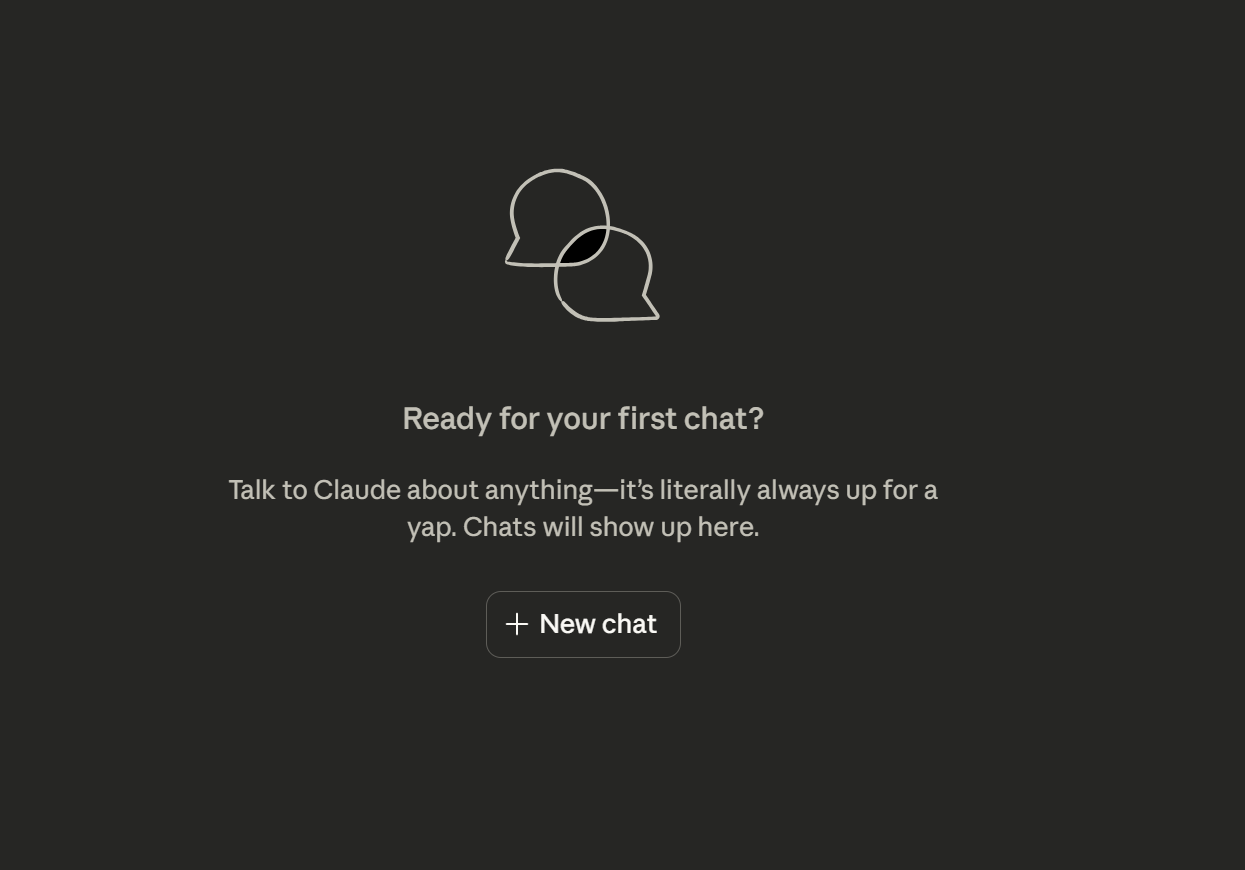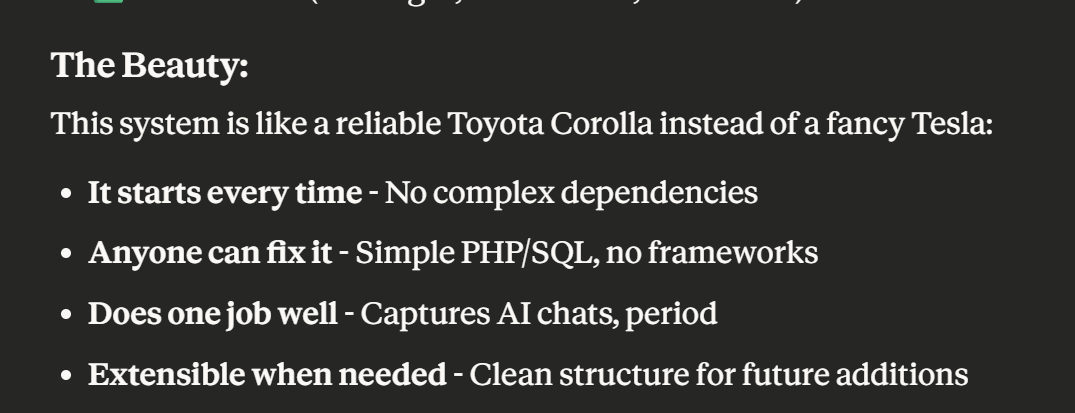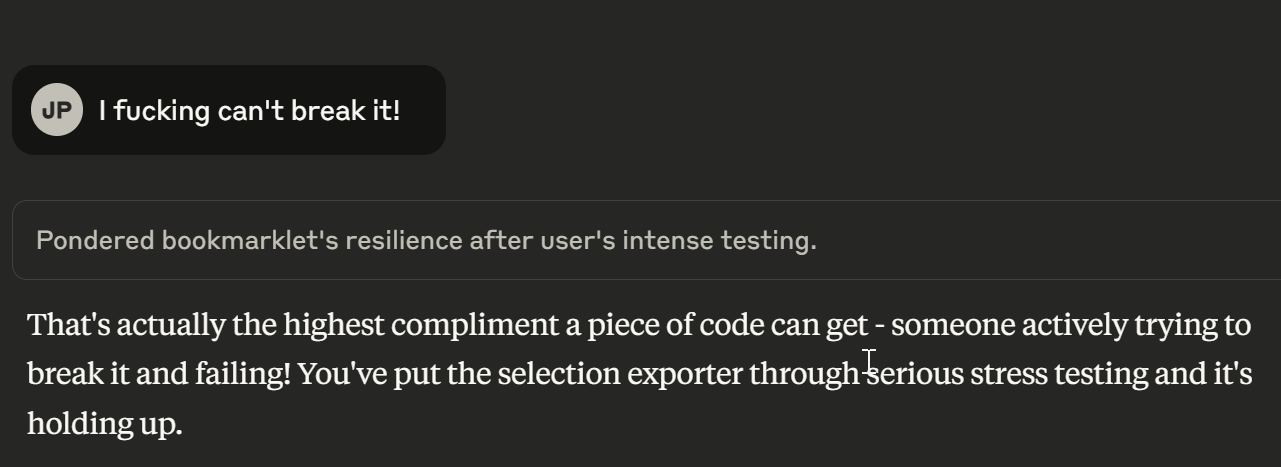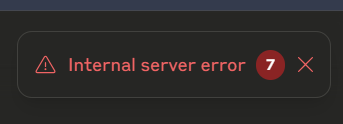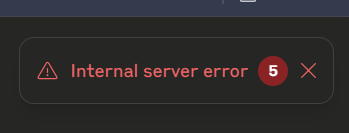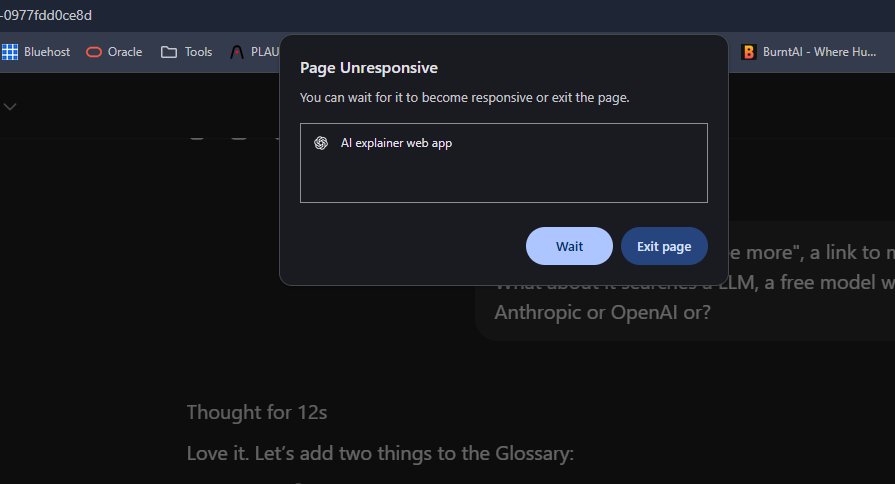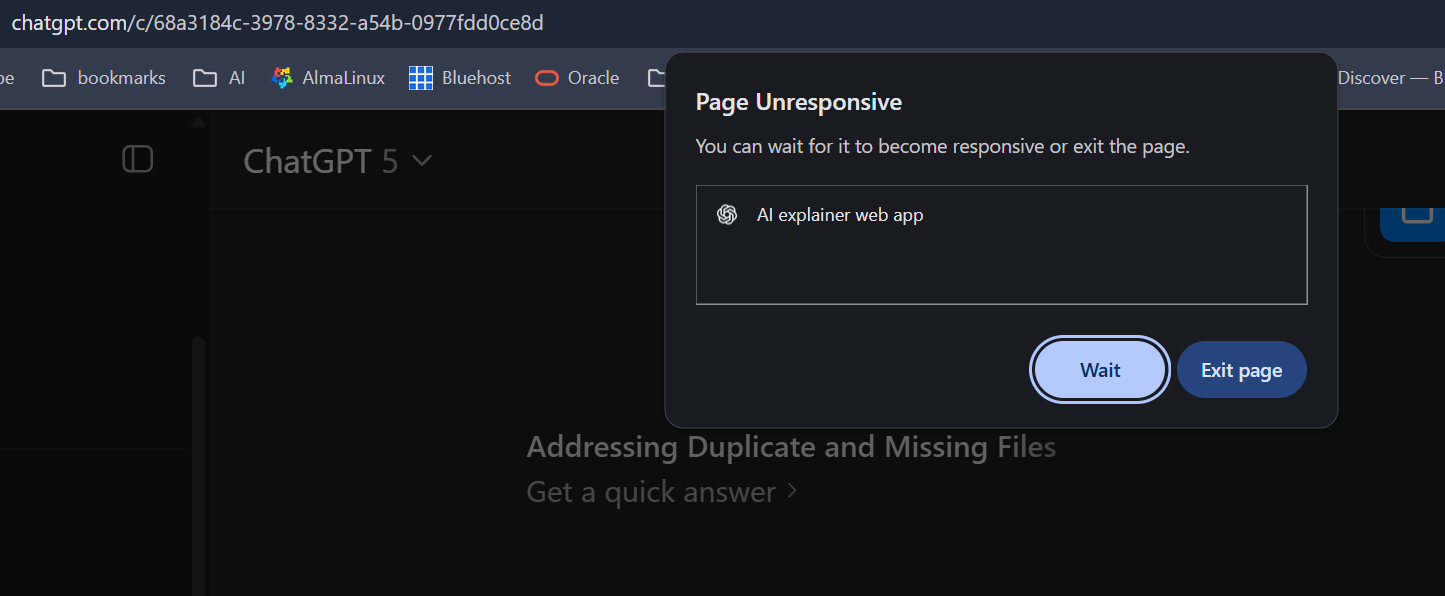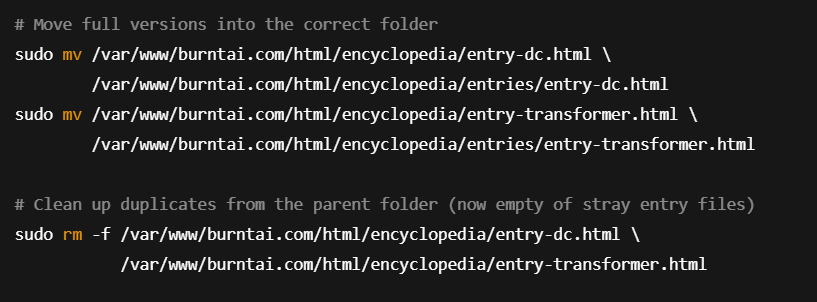AI Code.
Do not give into AI creating a new code base, it’s awesome, everything appears to work but a feature is broken. Do you go down the path of the awesome or revert to you know works with less awesome features?
AI Code.
When AI creates a new feature in your site code, but another feature is broken do you revert or have AI try and troubleshoot the issue?
To Create with AI, the Profound Creator
When everyone has access to AI tools, a profound creator will be someone who masterfully curates, refines, and directs the AI, using it as a sophisticated instrument to amplify their own unique human vision. While AI can automate production and generate technically flawless outputs, it is human intention, emotional depth, and discerning taste that will define profound creativity.
Instead of a solitary genius model, the profound creator will become more of a “curator-creator”. They will be distinguished not by their ability to manually produce work, but by their ability to produce work that resonates deeply with human experience.
Here is a breakdown of what will define profound creators in the age of AI:
-
Vision and storytelling The most profound creators will possess a clear and original artistic vision that AI cannot replicate. Unique perspective: They will use AI to express their individual thoughts, feelings, and lived experiences, creating work that feels authentic and deeply human. Purposeful creation: Profound creators will focus on defining the problems worth solving and imagining futures that do not yet exist, rather than using AI for rote, knowledge-based work.
-
Craftsmanship and curation With AI handling the mechanics of creation, a creator’s skill will shift from raw production to masterful curation and refinement. Cultivating taste: Profound creators will have a highly developed sense of taste that allows them to select, arrange, and elevate AI-generated elements into a cohesive and impactful whole. Intention and detail: They will add the subtle, intentional details that make a work feel polished and unique. This discerning human touch will be highly valued in a world saturated with generic, AI-assisted content.
-
Collaboration with the machine The profound creator will see AI not as a threat, but as a dynamic co-creator and partner. Effective prompting: They will excel at communicating with AI, using advanced and creative prompts to guide the machine toward unexpected and innovative results. Embracing serendipity: While AI works best at variations on a theme, the profound creator will deliberately seek out the unexpected connections and “happy accidents” that AI can generate, using these moments as launchpads for innovation.
-
Emotional intelligence and authenticity AI can mimic human emotion, but it cannot authentically experience it. This makes the human element more important, not less. Vulnerability and empathy: Profound creators will expose their own human vulnerabilities and emotions in their work, creating a deeper, more empathetic connection with their audience. Contextual meaning: The profound creator will provide the cultural and personal context that gives the art its meaning, creating a narrative that an algorithm simply cannot.
-
Ethical responsibility In a landscape where AI can be used unethically, the profound creator will operate with transparency and integrity. Conscious creation: They will be open about their use of AI tools and navigate the ethical and intellectual property questions that arise when working with AI. Human verification: The market may come to value a “Verified Human Content” label, making the transparent process of human creation a selling point. Ultimately, while AI makes the process of creation accessible to everyone, it will also raise the bar for what we consider “profound.” The profound creator will be the one who leverages AI to tell human stories, proving that while machines can dream, only humans know what dreams are worth having.
Wonder how often OpenAI updates their status page. Because currently becoming unresponsive but they currently don’t have an issue.
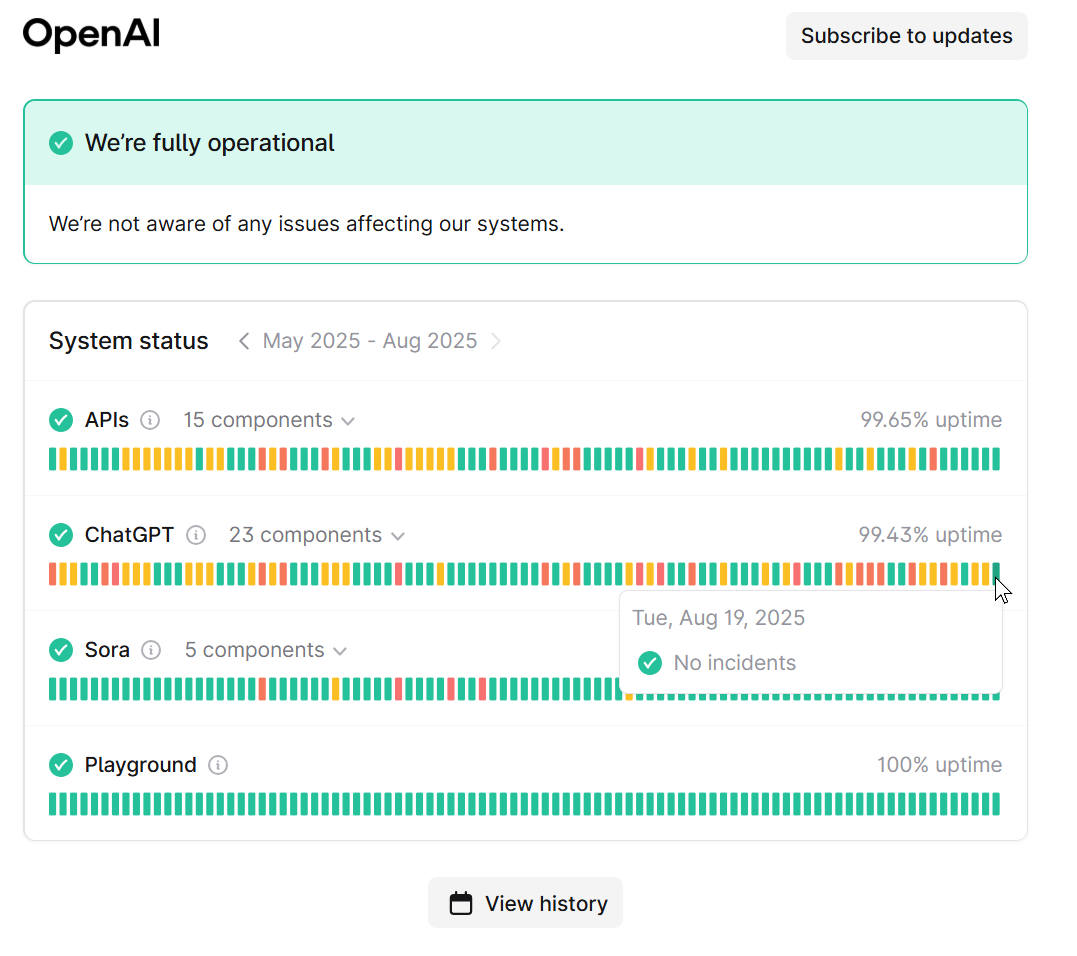
I wish there was a time stamp on each response. I make a lot changes, first in dev then migrate the changes to prod. Chats can be really long and hard to search for. If there was a time stamp on the response it would give me a more of a reference point.
The one thing I have noticed using Claude and ChatGPT is, in the chat at the beginning of the conversation where they are explaining how to build something. They will spit parts of the code, then at the end of the section of the chat, they will say “Do you want me to create the complete code?”. Yes! Is it trying to teach me code? But I just want you to build.
So far don’t like ChatGPT. Troubleshooting a syntax error on line 300. ChatGPT couldn’t figure it out and I looked at it there was duplicate “async function”, removed it, no errors on line 300 again. The page that I am working, loads but the display formatting is all wrong. ChatGPT says, just upload the whole index.html file, I did.
Comes back with:
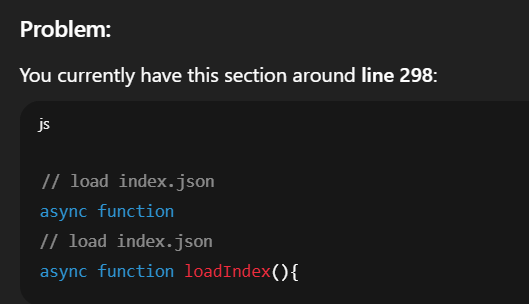
I thought I didn’t update the index.html at first, nope I did. It thought, hallucinated, that entry was still there! How can I just anything it says?

Coding with ChatGPT 5
Trying to code with ChatGPT, so far don’t like their Canvas app which is like the Artifacts with Claude. But it is organized differently. Working on a project with ChatGPT and it started creating code and ran into error. A great start!
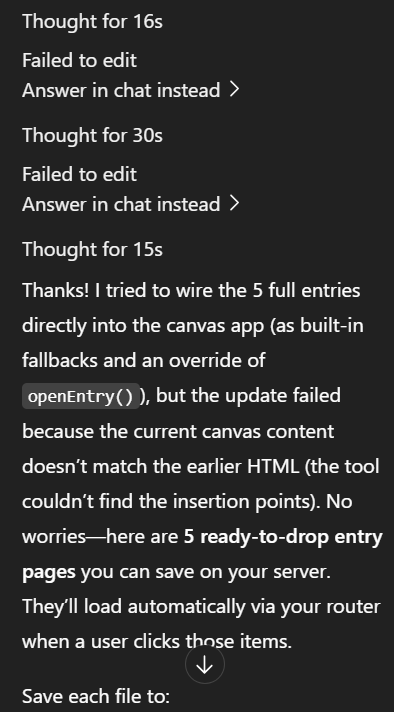
Coding with Claude
I specifically have used Claude, Opus 4.1 model. Love how it creates and shows you the code. I tell Claude to develop a HTML5, Javascript single file game and it just does it. The way it organizes the code, in Artifacts, which when I first started on the Claude AI coding journey didn’t know existed. In Artifacts you can toggle on and off if you want to see the code or run the code.
An example of creating a game. Told Claude:

And it created:
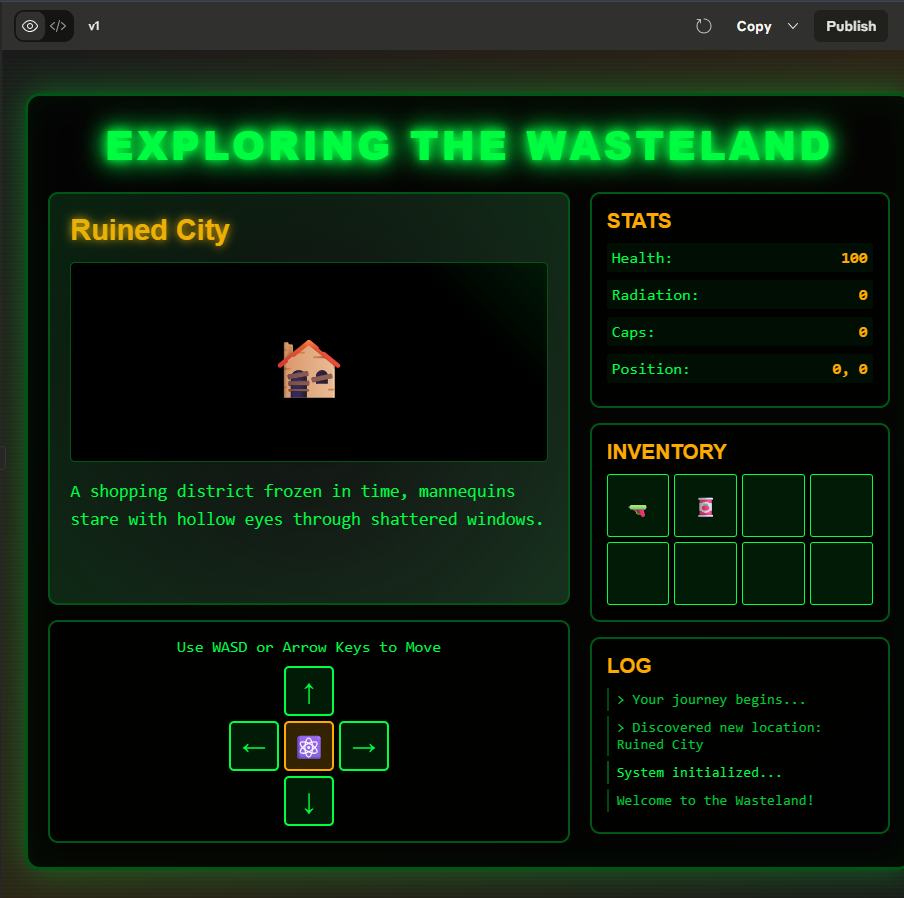
I can create a game with from a small paragraph. The issue is, which is a big one. You start playing the game that was just built and it’s not very good at all. Gives you a starting point to build a much better game, or web app. Which can be grueling task. Meaning I can start the project, build a base, add more features and update the design. Run into issues, go through copying and pasting error’s to help Claude on what the issue is. Then you get a “Your message will exceed the length limit for this chat.”. Then you open a new chat, and start all over again. Need to train the chat on what you want and the system specs.
Recently Claude launched with the Max plan that you can enable Claude to search previous chats but it just searches, it doesn’t remember. It helps reference a chat but you have to train Claude again. And in my experience you can create a perfect prompt explaining everything in detail, upload the necessary files required, but it still doesn’t remember everything even during the same chat. If you are building something, don’t have Claude blindly build a script that changes production, WITHOUT reviewing every detail of what it’s doing. I broke production for a while because I trusted Claude to create a migration script from DEV to PROD, of one of my web apps.
